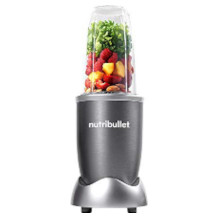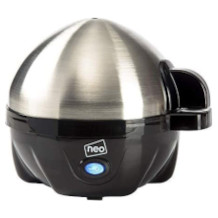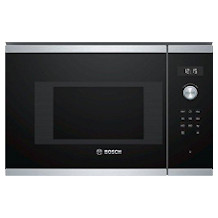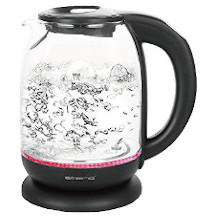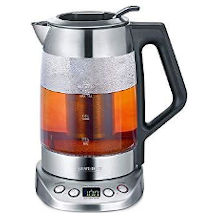Toaster purchasing advice: how to choose the right product
- The most important facts in brief
- A double-slot toaster can be found in almost every household. It can be used to toast two slices of bread.
- A long-slot toaster holds four slices and also slices of bread that are not square.
- A good toaster must achieve an even toasting result.
- Modern toasters have useful additional functions such as defrosting or reheating.
A crispy start to the day
A toaster is an everyday kitchen appliance that just about everyone owns. We rarely think about how useful it is. The toaster not only helps out when we have to eat something sensible under time pressure. It also provides valuable services when preparing a balanced breakfast or lunch. A kitchen is not complete without a toaster. But the choice is wide, which does not make the search for a new toaster any easier.
Bread has been toasted for thousands of years. With the electrification of households in the late 19th century, the first attempts were made to use electricity for this purpose. The invention of chrome-nickel alloy in 1906 made open-air heating wires possible. In 1908, the first commercially successful toaster came onto the market with the model D-12 from the manufacturer General Electrics. The toast was placed in wire-frame baskets arranged around a heating coil and had to be turned by hand. These baskets carried the risk of burning one’s fingers on them.
In 1928, pre-sliced, packaged bread came onto the market in America. This also helped roasting equipment to take off. One year later, the American Charles Strite invented the pop-up toaster with slots and variable time settings, as we still know it today. It was the first toaster that could toast bread slices from both sides at the same time. When the bread has reached the selected degree of browning, it is pushed out of the slots.
This principle has proven itself to this day. Modern toasters differ primarily in their range of functions. Inexpensive toasters are limited to the basic function: they toast the bread. More expensive models offer a few additional functions that can be used, for example, to heat all kinds of other baked goods.
All major manufacturers of electrical household appliances have toasters in their range. Well-known manufacturers include WMF, Philips, Russel Hobs, Severin and Krups.
How a toaster works
A modern toaster works in the following way:
- The pusher is used to push the toasting basket down. A mechanism – such as an electromagnet – keeps it there until the toasting process is complete.
- The browning level can be set with the rotary control, which all models have.
- The wires in the toaster start to glow as soon as electricity is passed through them.
- When the toasting process is finished, the baskets with the toast slices rise up again.
The typical aroma and characteristic browning of classic wheat flour toast comes from the ingredients: In contrast to other types of bread usually eaten in Germany, toast is particularly rich in protein and contains milk, fat and sugar. A golden brown colour is optimal. Depending on personal taste, the bread stays in the toaster a little longer or shorter. However, bread with burnt black spots should never be eaten.
Caution with acrylamide
Acrylamide is produced when food is roasted, fried, grilled and deep-fried. In animal experiments, the substance caused cancer and damaged genetic material. The darker the toast is roasted, the more it is contaminated with the substance. Therefore, burnt toast should be disposed of.
What models of toaster are there?
The most basic difference between different toaster models is the number and size of the slots. If you want to toast more than two slices or bread other than classic toast, you need to buy a special model. The normal two-slice toasters are not sufficient for this.
The slot toaster
The double-slot toaster is the most common model found on the market. Small single-slot toasters and models with more than two slots are also available. Nowadays, almost all appliances are equipped with the most important functions. These include the rotary control for the degree of toasting, but also the so-called bread slice centring system. The bread slides into the centre of the slot when the lever on the side is pressed down. This gives the toast an even browning. Many toasters have two adjustable brackets next to the slots. Baked goods that do not fit in the toaster can be heated on these bars. However, buns can easily fall off these bars. If they are poorly made, they may give way under the weight of baked goods. A better solution is a removable bun attachment, but not all models include one. Bread roll attachments that fit standard toasters are also available separately. A drawer under the toaster that collects crumbs makes cleaning easier. The simple slot toasters are well suited for single households and small kitchens because they are space-saving and inexpensive. Depending on the model, they also have particularly useful additional functions, for example a defrost mode.
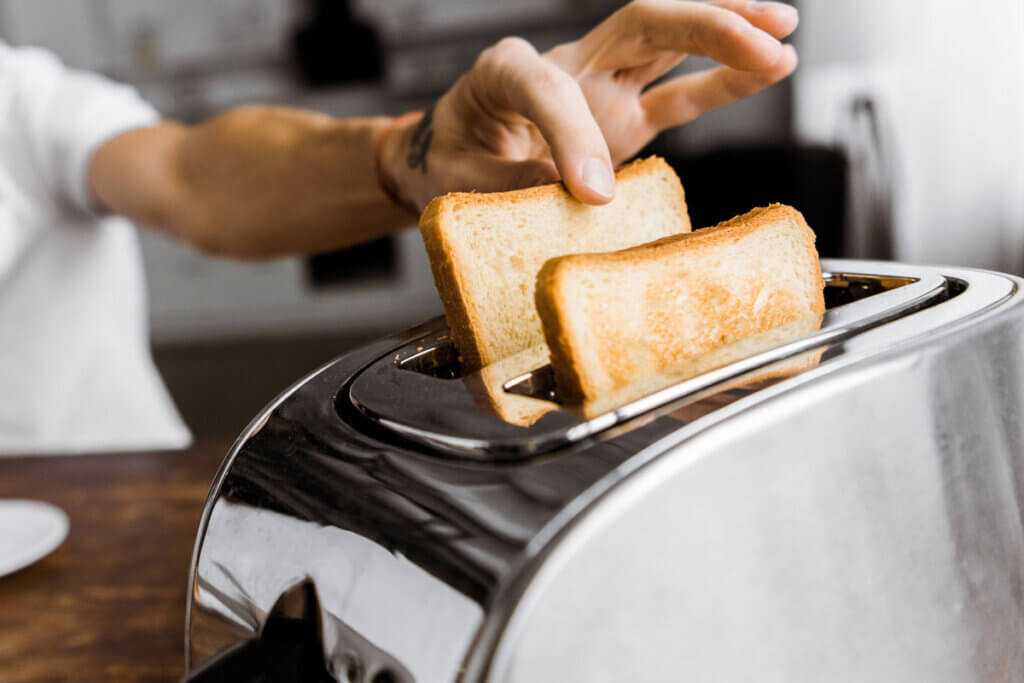
The long slot toaster
In terms of function, long-slot toasters are no different from other pop-up toasters. The decisive advantage is that not only classic toast slices can be browned in the long slots, but also sliced brown or grey bread, for example. A long-slot toaster is ideal for bread lovers who want to toast a wide range of baked goods. A long-slot toaster can comfortably accommodate two slices of toast side by side. If the toaster has two slots, it can even toast four slices at the same time, which is convenient for larger households. Some models have slots wide enough to toast baked goods such as bagels.
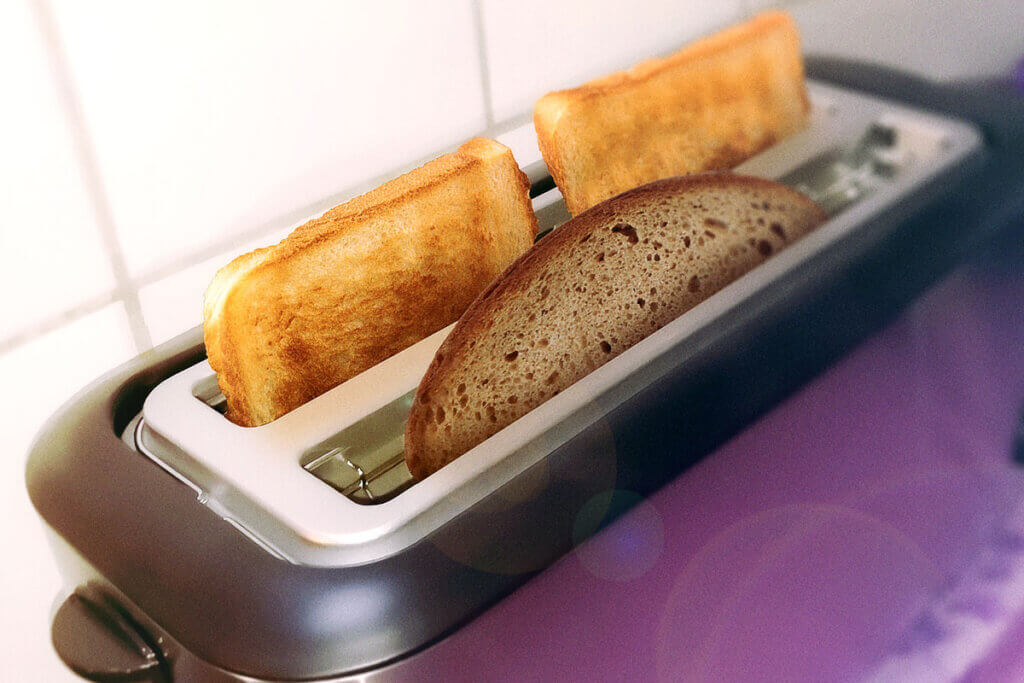
The triumph of white bread
In Germany, the classic light-coloured toast bread has only been around since the 1950s. Before that, sliced mixed bread was toasted. Many households did not have a toaster anyway. American wheat producers and German kitchen appliance manufacturers joined forces to make toasters and American toast popular with great advertising effort. As can be seen today, they were successful.
In most cases, the toaster comes with an attachable grate. A crumb tray and bread centring system are now part of the basic equipment. A practical additional function is the stop button, which can be used to end the toasting process. In some cases, the space available in the kitchen is a good reason to buy a long-slot toaster. It is often easier to find a free space on the kitchen worktop for a long and narrow appliance than for a short and wide one.
The flat toaster
A flat toaster or Danish toaster has a grate instead of slots. Like on a grill, baked goods of any size can be placed on a flat toaster. In this way, they offer greater freedom than toasters with slots. Buns, croissants, baguettes, bagels and even the pizza from the day before can be toasted or reheated with the flat toaster. Even sandwiches can easily be placed on the flat toaster. However, care should be taken to ensure that no fat drips onto the heating elements. Thanks to the shape of the flat toaster, it is no problem to keep an eye on the baked goods. Like any other toaster, the flat model has a toasting degree control and a crumb tray. No heating wires are heated, but quartz tubes, which heat up faster and use energy more efficiently.
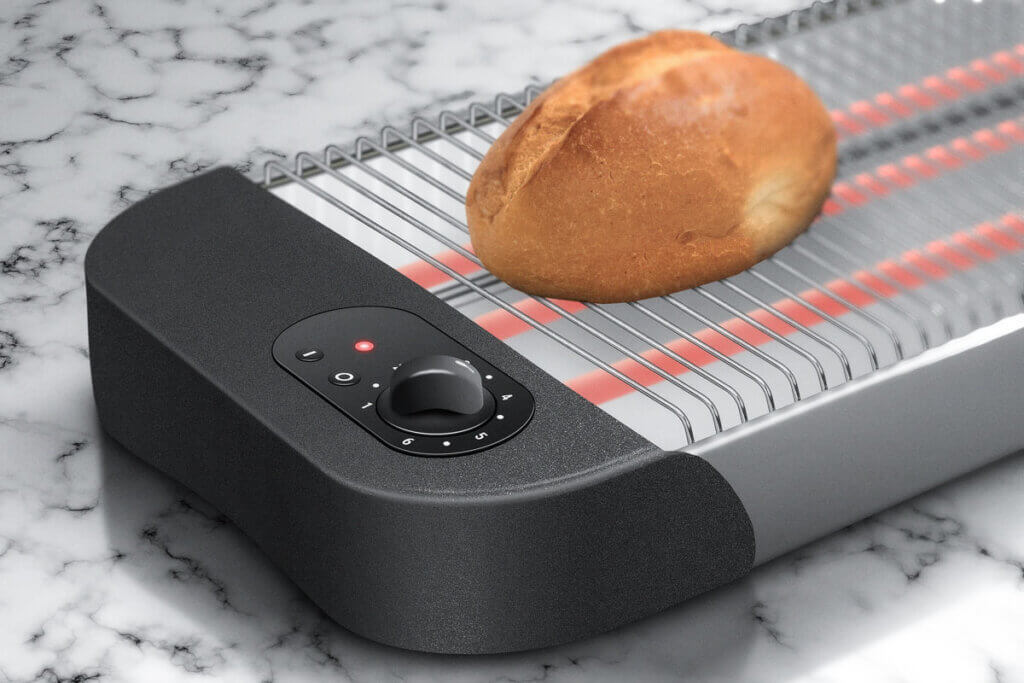
Due to its shape, however, the flat toaster also has disadvantages: Slices of bread have to be turned by hand or with a tool. Due to the large heated surface, quite a lot of heat rises to the top. They are poorly suited for small kitchens because they have a rather large footprint. In addition, a suitable storage space must be reserved for the flat toaster when it is not in use.
Special toaster variants
If you don’t have much time to cook, a sandwich toaster is ideal. They can be used to prepare delicious hot meals quickly. Because they are so easy to use, they are also good for the small appetite in between. The principle of operation distinguishes the sandwich toaster from the double-slot model. It is more like that of a waffle iron: the lid is lifted and the sandwich is placed on the Teflon plates. Then the lid is pressed down to the underside until it locks into place. Many models divide the square slice of toast into two triangles. The lighting of a lamp indicates that the meal is ready.
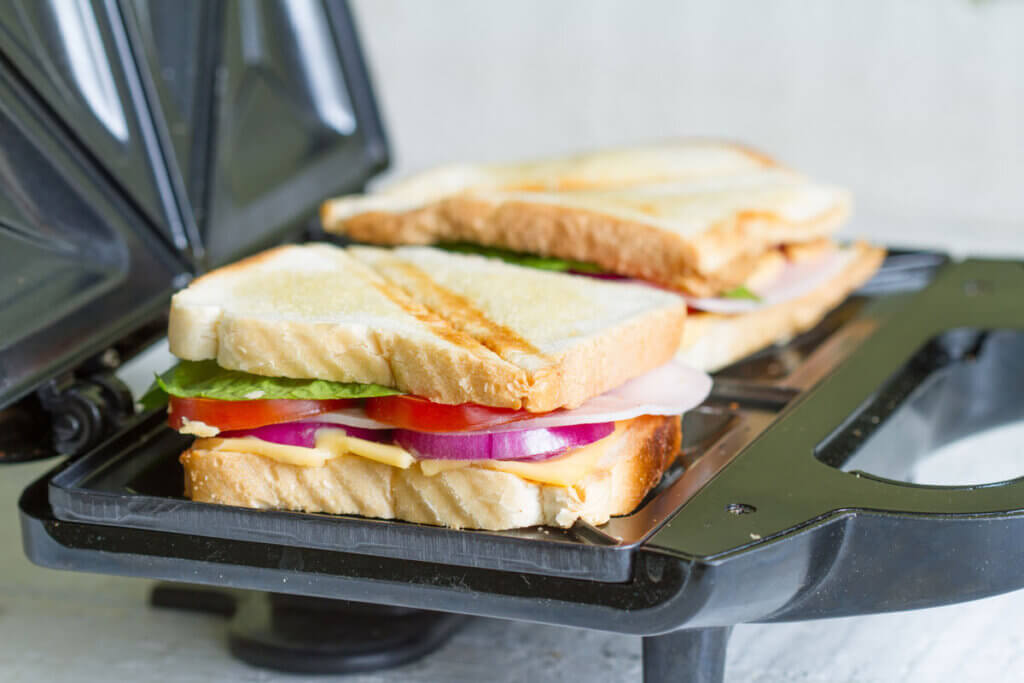
The more expensive version of the sandwich toaster is the contact grill. Such a grill is used in cafés and restaurants to prepare panini. All kinds of baked goods as well as meat and vegetables can be fried with such a grill. The device can be used in many ways in the kitchen, which is also reflected in the price, which is significantly higher than that of toasters.
What should I look for when buying a toaster?
The most important criterion when buying a toaster is functionality. A good toaster delivers a convincing roasting result quickly and reliably. It should be clarified what other demands are placed on the kitchen appliance. The number and length of the slots should be based on how much toasted bread is needed. The dimensions of the appliance are also important. Where should the toaster be placed? Which additional functions are interesting? When you buy a toaster, you want to use it for as long as possible, which is why material and workmanship are crucial. Last but not least, the appearance also plays a role, so that the toaster fits harmoniously into the kitchen furnishings. The following factors play a role in choosing the right appliance:
How much does a toaster cost?
Toasters are among the less expensive household appliances. A well-functioning no-name toaster can be had for as little as ten euros. Many inexpensive models toast just as well as more expensive ones; the difference lies mainly in the features and the durability of the products. It doesn’t pay to buy a cheap toaster that will soon break down and need to be replaced. High-quality standard models with two slots can be found at most brand manufacturers in the price range of 20 to 40 euros. A long-slot toaster costs 40 euros or more.
Material and workmanship
A well-made toaster can be used for a very long time. Sustainability plays an increasingly important role in our lives. A high-quality appliance only needs to be replaced after years and thus protects the environment. Commonly used materials for the outer shells are aluminium, stainless steel and plastic. Even models that are not made of plastic usually have some plastic applications. In most cases, these are operating and standing elements. Inexpensive plastic toasters can achieve good roasting results, but often only have the basic functions. One disadvantage of plastic is that it discolours after a while and looks unsightly. If the toaster malfunctions, it can, in the worst case, become deformed by the heat.
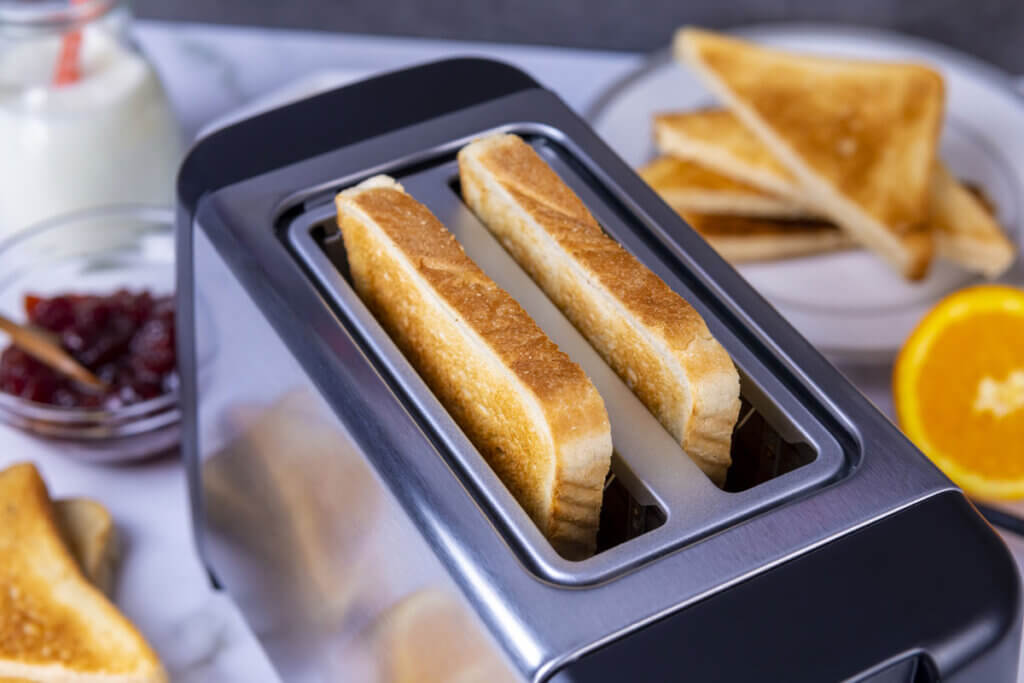
Stainless steel is recommended because of its durability and longevity. It can be cleaned easily and hardly loses any of its visual quality. However, a stainless steel housing can get quite hot, so caution is advised. Good models have sufficient heat insulation. Aluminium is also very stable and has the advantage over stainless steel that it is very light. However, aluminium tarnishes after a while and needs to be cleaned. Ultimately, it is a matter of taste which material is chosen.
Size and slot width
A toaster is only one of many appliances in the kitchen. Before buying a toaster, you should think about where it will be placed and how much space it may take up. Depending on the size of the household, you should also choose a model that can toast more than two slices at a time, for example a double long-slot toaster. This way, no one has to wait longer at breakfast. If you want to toast a larger selection of baked goods, you need a long-slot toaster. Some models have extra-wide or even variably adjustable slots. For single households with small kitchens, a standard double-slot toaster is often sufficient.
From time to time, bread may get stuck in the toaster. To remove stuck bread from the toasting slot:
- Pull the mains plug out of the socket and wait until the toaster has cooled down.
- Pull out the crumb tray.
- Turn the toaster on its side so that the bread slice can fall out.
If the bread is still stuck, it can be loosened with a wooden stick, such as the handle of a wooden spoon. Never use knives, forks or other metal tools. The heating wires inside a toaster are in many cases not insulated. If they come into contact with a metallic object, they conduct the current further, in this case into the human body.
What features should be present?
Even inexpensive toasters have a certain basic equipment. These include a control dial for the browning level, a crumb tray and, in most cases, a bun attachment or at least hangers. Ideally, the toaster’s controls are clearly labelled and have easy-to-read pictograms. In higher price segments, further practical features are added.
Standard bread packages are often too large, especially for singles. To prevent half of the bread from spoiling and having to be disposed of, many single people freeze bread. Modern toasters have a useful defrost function. The bread is first defrosted and then toasted. Here’s how it works:
- Tap or scrape ice off the bread.
- Set the browning control to the desired toasting level
- Put the bread in the toasting tray and press the control lever down.
- Now press the defrost button. When the bread is defrosted and toasted, the toaster switches off automatically and the slices of bread spring upwards.
The toast-up function allows you to heat bread without browning it. This is practical for reheating bread that has already been toasted without it turning black. The toast slice is placed in the toasting slot as usual, then the toast up button is pressed. When the bread is warmed up and crispy, the toaster switches off. The set browning level has no influence on the toast-up function.
Some toasters have a bagel function. Here, one side of the bagel is toasted and the other is merely heated. Despite the name, this one-sided, energy-saving toasting process also heats other baked goods, of course.
Delicious sandwiches can also be prepared with a slotted toaster, which does not require a special sandwich toaster. The practical sandwich tongs help out here. Some toasters even come with such tongs. The sandwich is placed in the stainless steel tongs, which are then hung in the toaster. Since the tongs are closed at the bottom, no fat can drip into the toaster. Nevertheless, it is not advisable to use ingredients that become very liquid under heat. So not every cheese is suitable for this type of preparation. For successful use, the slotted chambers of the toaster must be wide enough for the tongs. It is best to compare the size specifications before buying.
Cable winders are handy to prevent a mess of overlong cables on or behind the worktops. The unused part of the cable is simply rolled up under the bottom of the appliance. This is not only useful if the toaster is always in a fixed place. By rolling up the cable, the location of the appliance in the kitchen can be chosen flexibly, or the desired location can be reached.
Many higher-priced models have special extras that are useful but not absolutely necessary. These include a digital display that shows the remaining toasting time. Combination toasters and egg cookers are also available.
The roasting result
Any toaster can toast bread. The only question is how well. When toasting, the most important thing is the uniformity of the toasting result. The toast should not be crispy in the middle, but soft at the edges. Both sides should also have a similar browning. A centring function has a positive effect on roasting. To ensure that everyone gets their money’s worth, different roasting levels are recommended. Unfortunately, a particularly large number of roasting levels is not very informative in this respect. Even expensive models do not necessarily roast better than inexpensive ones. Price differences are mainly expressed in the processing.
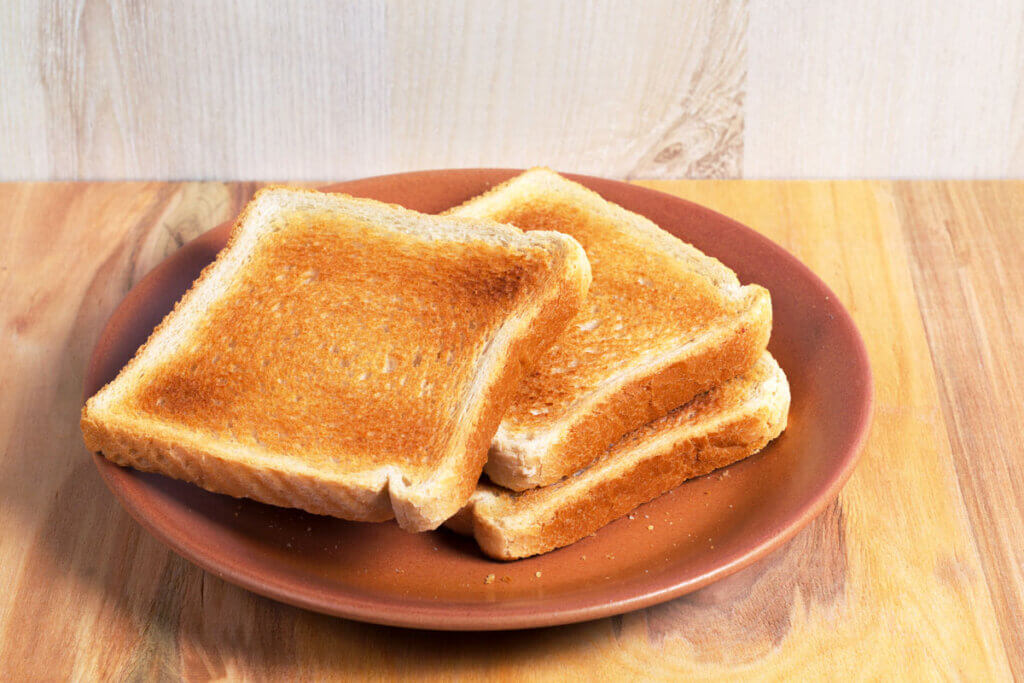
Safety aspects
The slices of bread must be easy to remove so that there is no risk of burning. This can be done most safely if the finished toast protrudes far enough from the toaster. An automatic switch-off prevents fires in the toaster. If a slice of bread gets stuck in the shaft and the lever cannot be raised again, the toasting process is automatically interrupted after a certain time. A crumb tray also contributes to safety, because many and particularly large crumbs pose a fire hazard. Of course, the drawer must also be emptied regularly. Good heat insulation is also important. It prevents the appliance from getting too hot from the outside. This significantly reduces the risk of burns. Some toasters have a lifting device that raises the toast slices so that they are particularly easy and safe to grip.
For users who are not comfortable with the exposed heating wires of most toasters, a device with quartz glass heating is recommended. There is no risk of electric shock with these. They are not only safer, but also more energy-efficient. However, they are also more expensive than ordinary toasters. These models are available from about 60 euros.
Power consumption and performance
Although toasters are usually only in use for a few minutes, regular use results in quite high power consumption. This is due to the high power consumption of the appliances. A standard model with a double slot consumes 800 to 1,000 watts of electrical power. For comparison: a powerful hand mixer is operated with 500 watts. Long-slot toasters have an even higher consumption due to the long heating wires. Basically, more power means that the wires heat up faster and the toasting process takes less time.
Save energy and protect the environment
If the eco-balance of your toaster is important to you, look for the “Blue Angel” seal for sustainable purchasing. The label’s award criteria ensure that the toaster has low energy consumption, is made of low-pollutant materials and meets all safety requirements.
The design
Many people attach great importance to a tasteful selection of kitchen items. Even if a toaster is first and foremost an object of utility, it can become an eye-catcher with its stylish design or blend discreetly into the overall picture. In the kitchen, it is often placed in a highly visible position, for example on the dining table. Retro-design toasters that combine nostalgia with modern technology are particularly popular. Many retro toasters come in pastel colours, which visually freshen up the kitchen. The other current trend is to emphasise simplicity, for example in stainless steel, which complements minimalist furnishings. However, the functionality of the toaster should not be forgotten over the design. Even a designer toaster must deliver convincing roasting results.
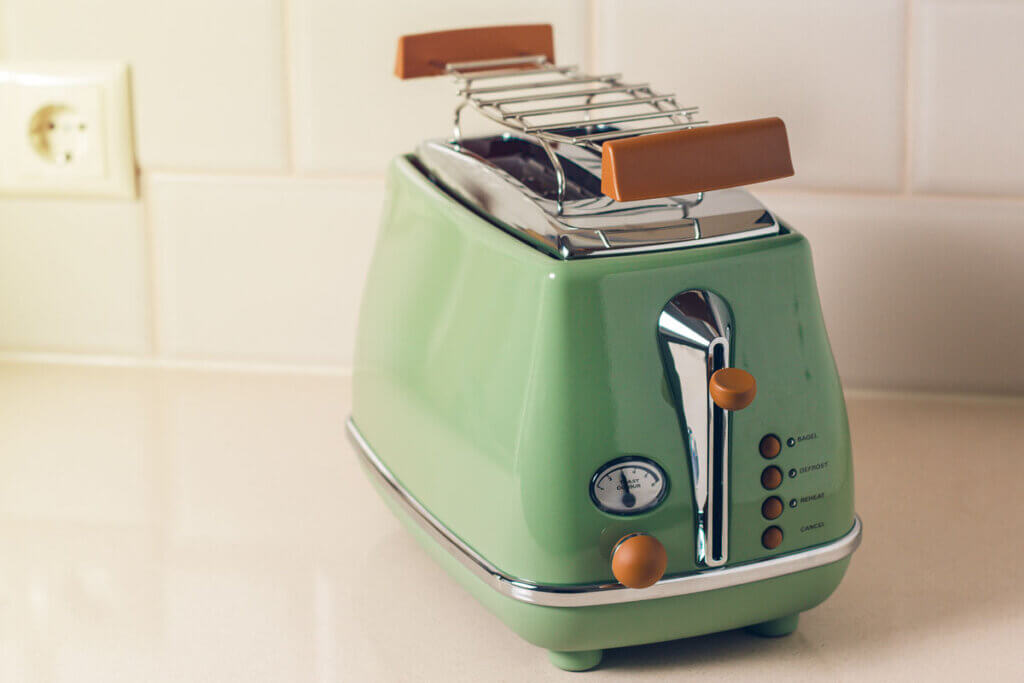

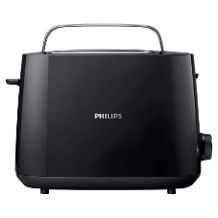
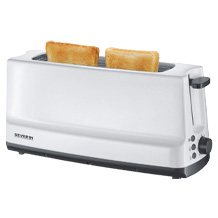
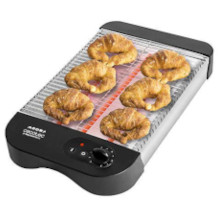
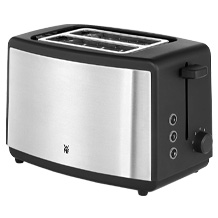
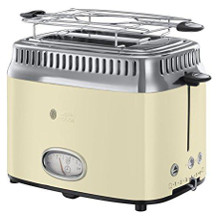
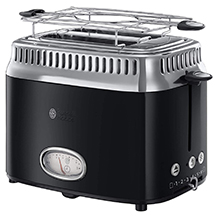
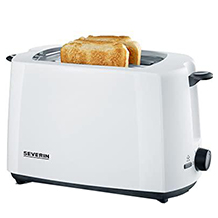
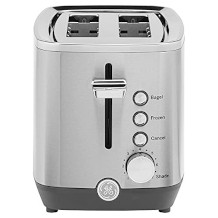
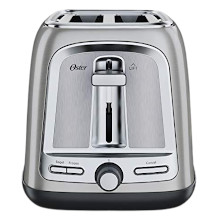
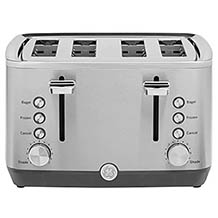
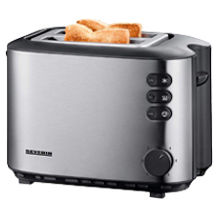
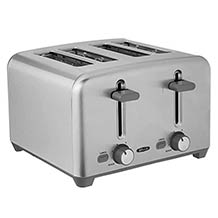
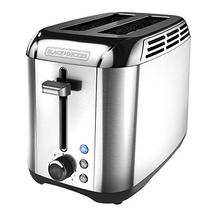
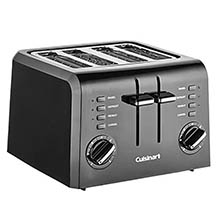
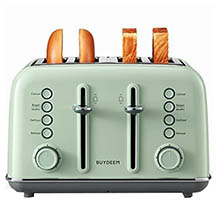

 3,806 reviews
3,806 reviews
